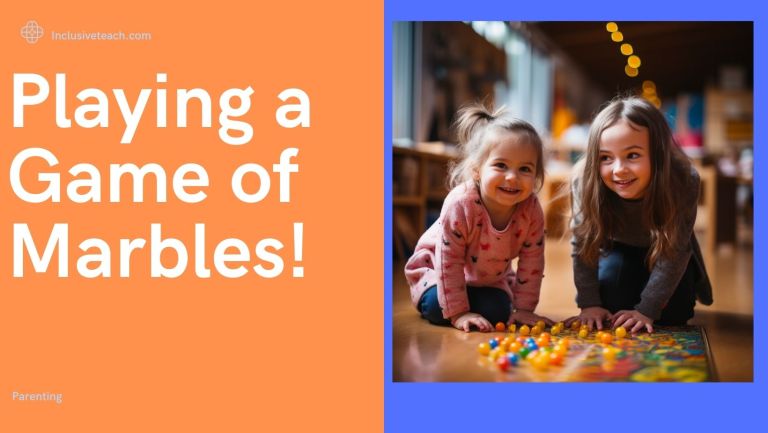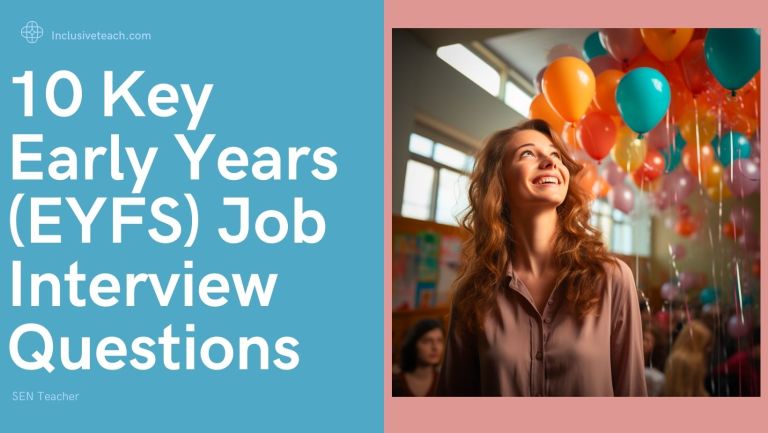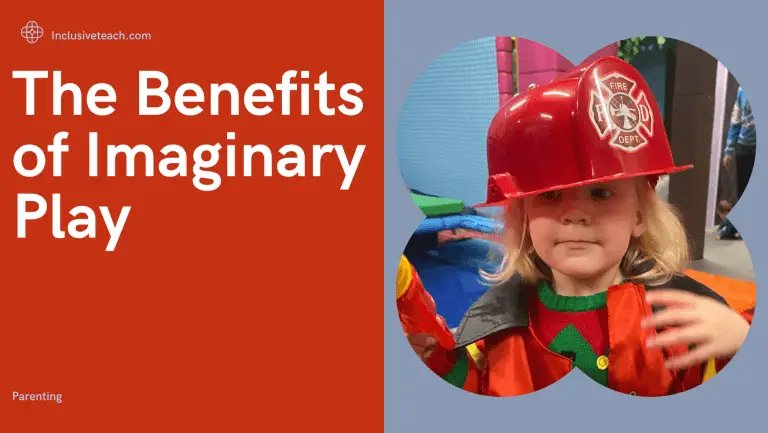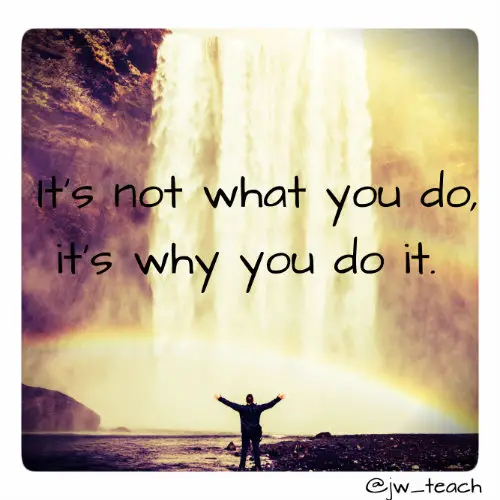Building a Robust Communication Curriculum in Early Childhood
Creating a Language-Rich Environment and Communication Curriculum:
Communication and language skills are critical for improving quality of life for young people. However, children with SEN or disadvantaged backgrounds often lag in early language development, resulting in long-term challenges to progress. A well-planned communication curriculum in early childhood (EYFS, Nursery or Kindergarten) is essential to build these foundational skills for all children, especially those needing extra support.
The Importance of Early Language
Early language development is crucial for children’s cognitive, social, and emotional growth. Language skills enable children to communicate their needs, feelings, and thoughts, as well as to understand and interact with others. Language also supports learning in various domains, such as literacy, numeracy, and problem-solving. Research has shown that children’s language abilities at an early age can predict their academic achievement and life outcomes later on. Therefore, it is important to provide children with rich and stimulating language environments from birth, and to identify and support those who may have difficulties in developing their language skills such as DLD.
- Research shows early communication and language strongly predicts achievement in literacy, math, and beyond.
- Gaps emerge early and widen over time. Intervening in preschool years can create more equitable outcomes.
- Language learning should not be left to chance. A systematic curriculum is key, just as with literacy and maths.
Creating Language-Rich Environments
- Surround children with speaking, listening, and vocabulary-building opportunities throughout the day.
- Maximise opportunities for communication in everyday moments – meals, transitions, playtime, etc. – for rich teacher-child interactions.
- Use diverse, engaging materials to spark communication like books, felt boards, props, music, sensory resources.
- Take children on field trips to expose them to new vocabulary and experiences.
- Create cozy spaces for 1-on-1 and small group language activities.
Building a Comprehensive Curriculum
Many of the settings I have worked with base this on a Total Communication Curriculum or approach. Total communication is a way of teaching and supporting children who have communication difficulties, using a range of methods and modes of communication. You blend as needed the communication supports available such as speech, sign language including Makaton, gestures, symbols, pictures, and devices. A total communication curriculum aims to help children develop their expressive and receptive communication skills, as well as their social and emotional skills.
A a total communication curriculum for an EYFS Setting, Pre-School or Kindergarten requires guidance on how it is planned and implemented for the individuals not just a description of the communication approaches used:
- Assessment: The first step is to assess the communication needs and abilities of each child, using standardised tools or informal observations. The assessment should cover the child’s speech, language, hearing, vision, cognition, behaviour, and interaction preferences. The assessment should also involve the parents, teachers, and other professionals who work with the child.
- Planning: The next step is to plan the goals and strategies for each child, based on the assessment results and the child’s interests and strengths. The goals should be SMART (Specific, Measurable, Achievable, Relevant, and Time-bound) and aligned with Kindergarten curriculum standards (USA) or the EYFS Framework (England) The strategies should include the types and modes of communication that the child will use and learn, such as verbal speech, sign language, gestures, symbols, pictures, or devices. The strategies should also include the materials and resources that will be used to support the child’s communication, such as books, games, toys, flashcards, charts, boards, or apps.
- Implementation: The third step is to implement the goals and strategies in the classroom but don’t forget to involve home to make the strategies really effective. The implementation should involve providing a total communication environment that is rich in language input and output opportunities. This means using and accepting all forms of communication with the child, modelling and prompting the child to use their preferred mode of communication, providing feedback and reinforcement for the child’s communication attempts, and creating meaningful and motivating contexts for communication. The implementation should also involve collaborating to ensure consistency and continuity of communication support.
- Blend communicative games, songs, chants, finger play and other imagination based activities into whole and small group times.
- Read interactive books or sensory stories daily to build comprehension skills.
- Provide opportunities for show and tell, performances, and sharing time.
- Evaluation: The final step is to evaluate the progress and outcomes of the goals and strategies for each child. The evaluation should involve collecting data on the child’s communication skills and behaviours using formal or informal measures. The data should be analysed to determine if the goals have been met or need to be revised. The evaluation should also involve reviewing the strategies to see if they are effective or need to be modified. Decide as a setting how you are going to show and track progress.
If you want to learn more about how to design and deliver a total communication curriculum for EYFS/Kindergarten, look at of these resources:
- Total Communication Approach for Children and Young People with Additional Needs: A booklet by NCSE that provides an overview of total communication approach and how to use it at home.
- TALENTS Curriculum Total Communication: A document by Kennel Lane School that provides a high-level overview of total communication curriculum for different stages of learning.
- Total Communication Approach: A web page by NAPA Center that provides some tips on how to use total communication approach for non-verbal children.
Adaptive Teaching Differentiation and Support
- For children requiring additional support, provide extra small group or 1:1 instruction focused on oral language or visual communication approaches using AAC.
- Work closely with speech therapists if needed to coordinate strategies.
- Give waits time, model more complex sentences, and encourage all attempts.
- Use visuals aids, gestures, manipulatives to support diverse learners.
- Identify appropriate peer communication partners.
Assessing Progress
- Continually observe, document, and collect work samples to assess growth.
- Update goals as skills progress. Provide new challenges.
- Share progress and involve families in supporting language.
- Refer children not making expected progress for additional evaluation and support.
Examples Activities to include in a Communication Curriculum
- Songs and rhymes – Teach rhyming songs, call and response chants, songs with gestures and movements. These build phonological awareness, turn-taking, vocabulary.
- Show and tell – Have children bring objects from home and describe them to the class. Encourage them to speak in complete sentences.
- Classroom jobs – Assign roles like line leader, weather helper, table captain to build independence and speaking skills.
- Feelings charades/role play – Act out emotions and scenarios for children to guess and describe. Boosts emotional intelligence.
- Storytelling – Have children dictate stories you scribble down then read together. Or use story prompts and pictures to spark narrative skills.
- Nature observations – Guide children in describing observations during nature walks using rich vocabulary.
- Dinner/snack conversations – Snack time is a great opportunity to engage children in describing their day, retelling stories, using table manners etc.
- Dramatic play – Set up a pretend grocery store, restaurant, or other scenarios to spark natural conversations.
- Show and tell videos – Have shy children pre-record descriptions of objects from home to show their classmates.
- Reader’s theater – Act out stories with different character voices and model expressive reading.
- Partner sharing – Pair nonverbal children with verbal peers for small talk time to practice turn taking.
Prioritising communication and language from an early age through intentional environments, activities, and curriculum pays off in children’s future academic and career success. Make communication development a central focus.
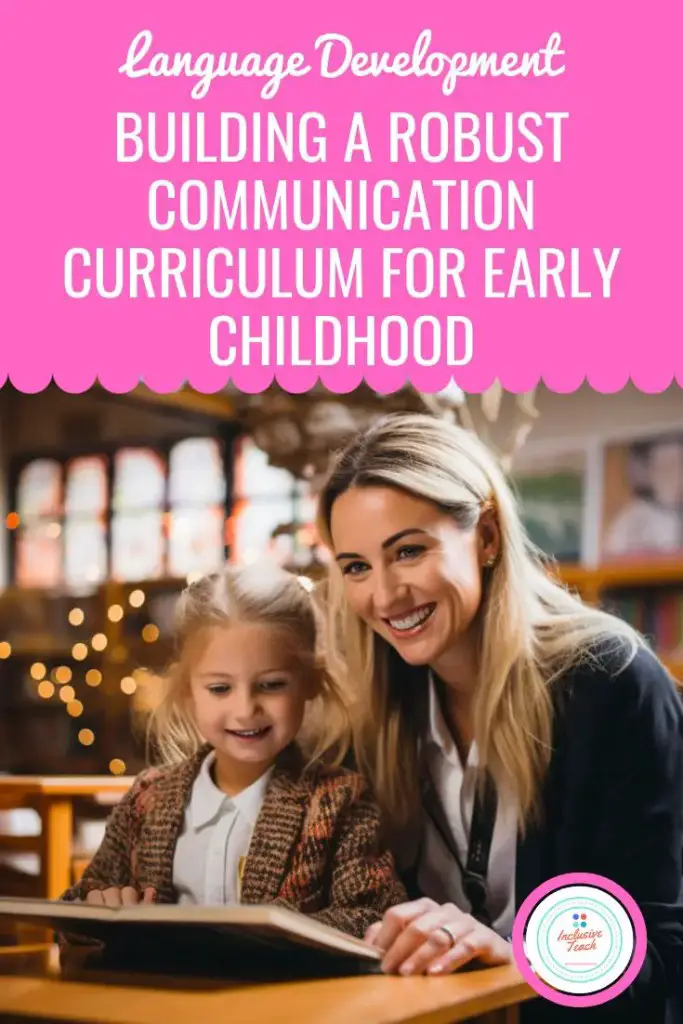
FAQs:
Q: How can I convince administrators of the value of a communication curriculum?
A: Present research on long-term benefits and share observed gaps in children’s skills as evidence of need.
Q: Where can I find resources to build language curriculum?
A: Reputable publishers offer pre-made curriculums focused on communication. Adapt materials from speech therapy and ELL resources. Also search for settings similar to your own and look at their policies.
Q: How should we document and track language growth?
A: Maintain portfolios of observations, work samples, videos. Use rubrics aligned to state early learning standards.
Q: What strategies help children who struggle to communicate?
A: Visual aids, modelling, assistive technology, sensory tools, social stories, positive behavior supports.
Q: How can families support communication skills?
A: Provide handouts with read-alouds, songs, and activities to practice at home. Create a library of sensory stories or adapted books. Maintain contact through communication logs.
References and Research Linked to a Total Communication Curriculum
I have tried to include only open access academic research references that go into the total communication curriculum approach.
- Total Communication (TC) Approach | SpringerLink: This is a reference work entry that defines and explains the total communication approach, its historical background, its current implementation, and its benefits and challenges for deaf children and their families.
- Rethinking Total Communication: Looking Back, Moving Forward: This is a chapter from The Oxford Handbook of Deaf Studies in Language that examines the issues and misconceptions surrounding the total communication approach, and considers whether there is a renewed role for it as a multimodal, comprehensive approach.
- Educating Children Who Are Deaf or Hard of Hearing: Total Communication This is a digest by ERIC that provides an overview of the total communication approach, its philosophy, its components, its advantages, and its implications for educators and parents.
- Total Communication (TC) Approach | SpringerLink This is another reference work entry that defines and explains the total communication approach, its history, its variations, and its outcomes for deaf children’s language development and academic achievement.

